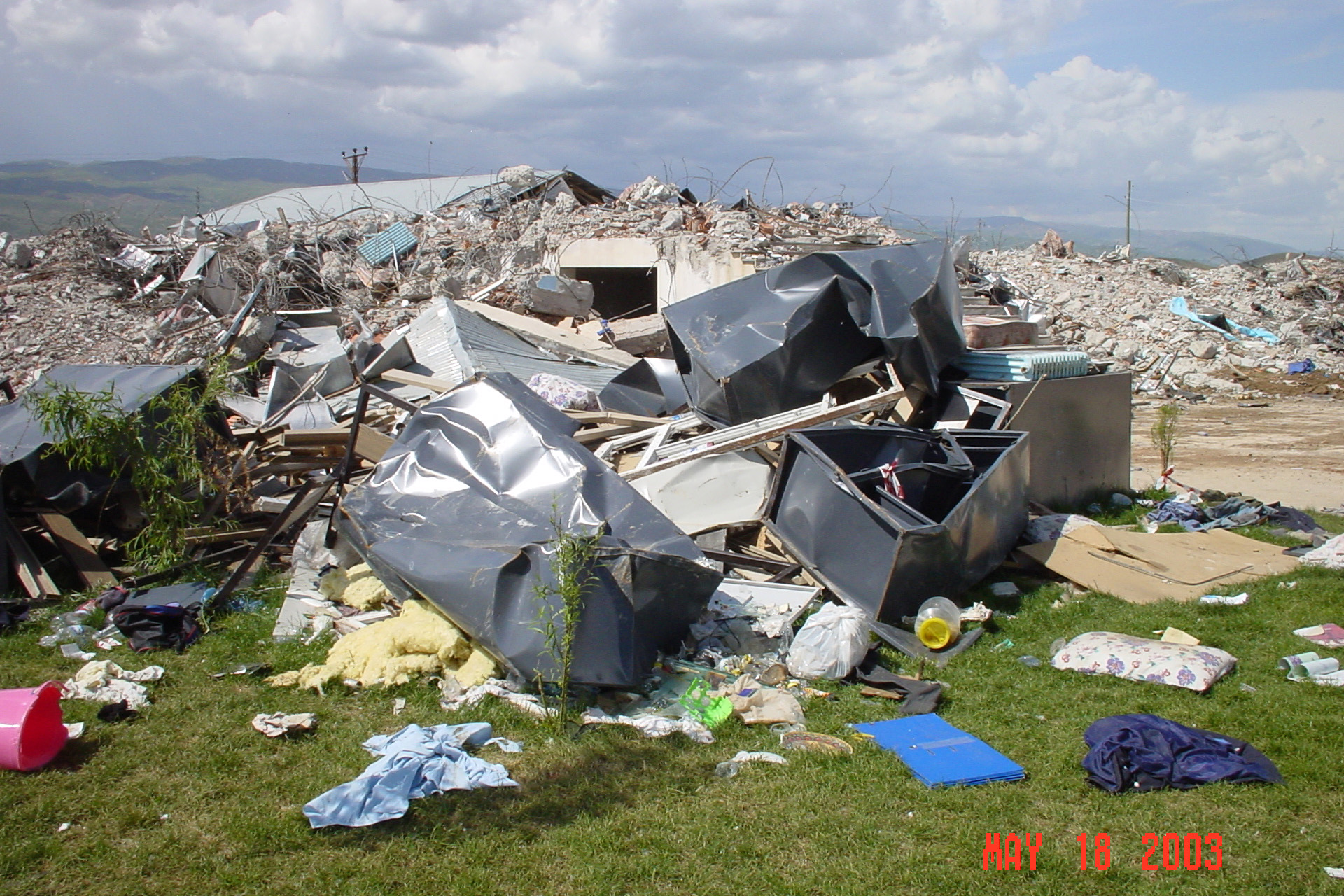By Mary Wymer
The weather outside is picturesque. People are going about their daily business. From cars driving over bridges and overpasses to people riding elevators within high rise buildings, life appears normal.
There is no forewarning for what is happening under the Earth’s crust. As the pressures change and tectonic plates move, the trembling begins.
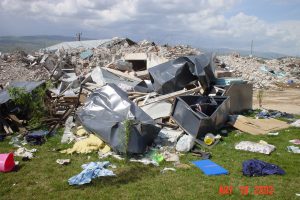
Outside, people driving cars notice immediately and try to get to the sides of the roads for safety. Inside, floors and walls shake, pictures fall from walls and ceiling lights sway. Not knowing the source of the vibrations, it is difficult to decide what to do. Stay inside or head outdoors? Duck under furniture or go in a hallway? Safety becomes the only concern as buildings begin to crack and pieces fall.
The United States Geological Survey records earthquakes every day. The earliest reported U.S. quake was felt in 1769 about 30 miles southeast of Los Angeles. A single earthquake several thousand years ago is believed to have killed 800,000 in central China.
In 2011, a Richter magnitude 9.0 quake in Japan became the largest Japanese earthquake since records began. The Japanese National Police Agency confirmed 15,787 deaths from it with more than 6,000 injuries. In addition, the earthquake, tsunami and aftershocks damaged or destroyed more than 125,000 buildings. From an economic standpoint, the Japanese government estimates the overall costs could exceed $300 billion, making it the most expensive natural disaster in Japanese history.
CAMPUS SHAKE TABLE TO REPLICATE QUAKES
In the wake of a catastrophic natural disaster, engineers review whether human and economic losses can be reduced. Through structural-engineering research and experimentation, building codes and retrofitting techniques are improving, better protecting inhabitants and property. Within The University of Alabama’s South Engineering Research Center, UA engineering professors are leading just such international research efforts. Much of their work will be conducted within a new structural engineering laboratory.
Dr. John W. van de Lindt, the Garry Neil Drummond Endowed Chair in Civil Engineering, leads numerous research projects within this lab. Joining him is a team of UA civil engineering students and fellow researchers throughout the country, including several of his Alabama colleagues.
The lab features an innovative hybrid testing system working in sync with the new 17 feet by 17 feet uni-axial seismic simulator, or shake table. It will test up to two-story buildings with a full capacity of approximately 50,000 pounds.
With a set of twin actuators having 55,000-pound force capabilities, the hybrid system will simulate a multi-story building through the computer, and then the actuators will physically place the load demand on the two-story structure while it’s positioned on the table. This is the only kind of seismic hybrid system in the Southeast and one of only several in the country.
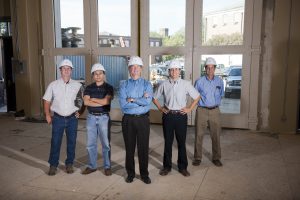
Installed on a 32-inch concrete slab, which exceeds one million pounds in order to prevent other vibrations during data collection, the shake table will move in one direction to replicate many of the world’s largest recorded earthquakes.
“The hybrid testing system is unique in that it provides real-time theoretical modeling coupled with physical seismic lab simulation as it is operating, and the feedback adjusts the simulation immediately,” says van de Lindt. “With the largest shake table in the Southeast, we’re excited to debut this distinctive system that will dramatically improve earthquake-simulation research for buildings and structural engineering as a whole.”
IMPROVING EXISTING BUILDINGS
Leading an interdisciplinary team of researchers from five universities, van de Lindt will focus a major effort on the “NEESsoft project,” titled Seismic Risk Reduction for Soft-Story Wood-Frame Buildings. It is a $1.4 million project funded by the National Science Foundation and investigates older multi-story buildings that are susceptible to collapse at the first story during earthquakes.
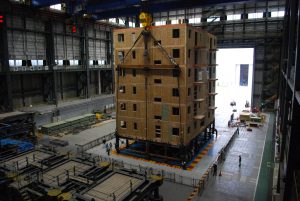
“Soft story” buildings are commonly three or four stories, designed with first floor parking. The need for this research was identified in the San Francisco Community Action Plan for Seismic Safety project, which categorized possible action plans for reducing earthquake risks in existing buildings.
According to the San Francisco-based study, 43 to 80 percent of the multi-story wood-frame buildings will be deemed unsafe after a magnitude 7.2 earthquake and a quarter of these buildings would be expected to collapse.
The UA-led study, which involves three major types of experiments, will provide a fundamental understanding of the way wood-frame buildings collapse. Following the experiments, conducted at UA, the University of California, San Diego and the State University of New York at Buffalo, the team will recommend seismic retrofit techniques.
CHANGING DESIGN CODES
Only the main shock of an earthquake is considered in building design, but van de Lindt says this should change. In collaboration with researchers from Michigan Technological University, he will investigate how to incorporate, within modern engineering codes, the chance of aftershocks, which typically follow earthquakes.
“Modern engineering design codes must account for both main shock and aftershock,” says van de Lindt. “A sobering example of this is the Christchurch (New Zealand) earthquake, whose aftershock was devastating to the city. Even though the aftershock was smaller in magnitude, it was located directly under the city.”
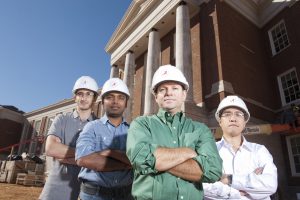
In addition to the shake table, the Structural Engineering Laboratory includes a 10 foot by 10 foot by 10 foot soil pit, a large suite of hydraulic actuators, and reconfigurable reaction blocks that tie into the million-pound strong floor for the actuators to react against.
The lab is designed for multiple experiments to operate at the same time while new situations are being set up. Set up of seismic simulations requires weeks and even months, whereas each simulation lasts only 30 to 60 seconds.
As a result of the structural engineering laboratory development, The University of Alabama is poised to pioneer new methods of structural seismic testing, revolutionizing design codes. One such effort is a paradigm known as performance-based seismic design, which enables an engineering design team to explicitly consider performance during the design process. For light-frame wood buildings, this is spearheaded at UA, and the new laboratory will provide the experimental support to further this national effort.
As communities that have experienced recent earthquakes dig out of the rubble and begin the rebuilding process, there is hope for a better and stronger structural tomorrow. From the engineering lab to the builders and contractors, earthquake-zone communities will be rebuilt and retrofitted with safety as the leading concern.
